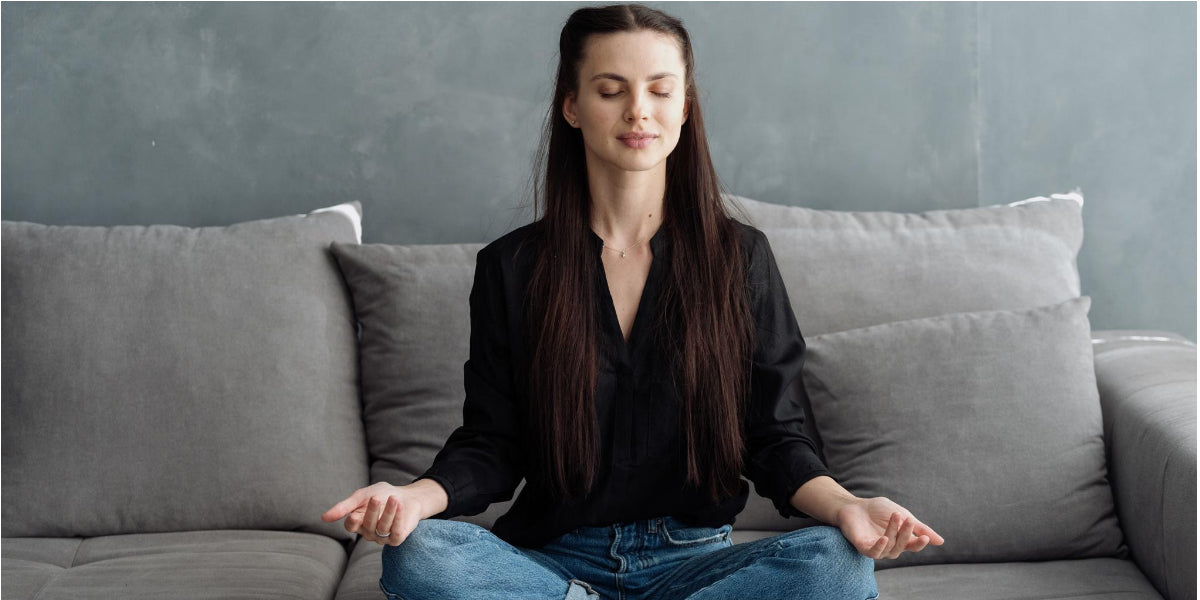In a fast-paced world, mindful living and slowing down seem to be a luxury for many. But it is important to be intentional with your decisions and activities and lead a life that goes beyond just going through the motions.
You can reach that state of mindful living through several ways, one of which is via meditation that has been proven to help many people feel grounded in their body. Even if it’s just a few minutes, a day spent meditating will help set up healthy habits that lead to mindfulness throughout the day.
Ahead are 5 tips to help you get started with meditation for mindful living. Also, read on to know some of the positive effects of mindfulness practice on your wellbeing.
Examples of Mindful Living
Mindful living is generally defined as an approach to life that encourages being aware of your thoughts, emotions, and actions in the present moment without any judgement. This heightened self-awareness allows you to step back, observe your thoughts, and become conscious of your decisions and how these decisions impact both you and others.
Here are some examples of how you can practise mindfulness in your daily routines:
Mealtimes
Mindfulness makes you more aware of the sensations of hunger and fullness. By paying attention to these cues, you're more attuned to the needs of your body. You can make better choices about when and what to eat, or you may even identify your emotional triggers for eating. By being fully present and engaged in the act of eating, you can taste, smell, and experience your food in a more meaningful way.
Interactions
Being mindful during conversations means actively listening and paying attention to what is being said instead of allowing your mind to wander. One way to practise mindfulness is to set aside your phone and truly listen to what others are communicating.
Exercising
When it comes to exercising, try to be present in each of your body's movements and sensations. Observe how a certain movement feels in each muscle group, not being distracted by thoughts that enter your mind or outside noise. You can also use mindfulness whilst doing some stretching exercises, allowing yourself to feel every muscle as it stretches and contracts.
Walking
To practice mindfulness when walking, pay close attention to your body and your surroundings per step. Additionally, look around you as you walk to see others and your environment.
Driving
Be aware of both your physical and mental states whilst driving. When stuck in traffic, instead of getting impatient, practise mindfulness by taking a deep breath and relaxing any tension in your body. Try looking outside your car to observe others as well. This will increase your connection and regain your calmness and balance.
A mindful living practice requires consistency, effort, patience, and dedication for it to become part of your everyday life. It is here where meditation plays an important role. Through regular meditation, you can achieve an improved mental clarity and emotional balance as well as increased self-awareness.
Effects of Mindfulness and Meditation
Meditation such as breathing meditation, guided meditation, walking meditation, or even mantras or affirmations is an important aspect of a mindful living practice– being that it’s a powerful tool for changing the way you lead your life. It’s useful for shifting your awareness and learning how to stay in the present moment without criticism.
Meditation Teacher Sharon Salzberg says patience is especially vital during meditation as it’s easy for the mind to wander. Citing as an example was her personal experience wherein she instantly lost focus on her meditation with just one breath.
Combining meditation with mindfulness helps bring you back to the present moment. By paying close attention to your breath, you can connect with the physical sensations in your body so that you may recognise and understand what’s triggering your emotions and reactions to situations.
Mindfulness meditation brings about science-backed benefits such as:
• Empathy
• Strong memory
• Reduced stress
• Improved well-being
• Self-compassion
Neuroscientist Sara Lazar had documented that mindfulness meditation could impact the brain’s grey matter and brain regions associated not only with memory but emotions and the sense of self as well.
5 Ways to Start Your Mindfulness Meditation
Before starting, take the time to ask yourself what you want out of mindfulness meditation practice. It could be that you’re aiming for more clarity or inner peace. Once you know your end goal, it becomes easier to find meditation techniques that fit.
1. Begin with Smaller Sessions
When starting your journey into mindful living through meditation, try shorter sessions first. Even just 5 minutes can be beneficial. Working with your breathing or visualising happy memories, for instance, can quickly encourage relaxation. If sitting still for a short period may prove challenging for you, start by lying down and using props that make your body feel comfortable such as blankets. This encourages relaxation whilst also helping you to stay focused during meditation.

2. Check in with Your Emotions
Set reminders throughout the day to assess where you are on an emotional level. It’s important when practising mindfulness to stay conscious of how being present helps manage any mental strain. If negative feelings arise, they should be acknowledged instead of avoiding them to understand yourself better. The act of acknowledging how we are feeling allows us to work on doing some form of self-care.

3. Add Movement to Your Meditation
Moving mindfully, such as walking, is a powerful tool to access deeper levels of self-awareness and remain present all at once. Guided meditations and mantra meditations contribute to enhancing your overall mindfulness. Coupled your activity with gratitude, especially if you find yourself stuck in negative emotions.
4. Choose a Comfortable Space
Have an area where you feel comfortable and relaxed for your regular meditation practice. Additionally, choose to set aside your gadgets more frequently.
According to Mindfulness expert Jane Bozier, a digital detox is important to leading a mindful life. Set a rule as to how long you can use your smartphones and other gadgets the whole day. Use the free time you have to check in on yourself, and resolve to be 100% focused on the activity at hand.
5. Practice Self-Compassion
Be patient with yourself as you practise meditation for mindful living. Practice self-compassion if there are moments when thoughts start drifting or distractions occur. Just gently guide your thoughts back to your breathing.
Furthermore, to avoid monotony, which leads to boredom and laziness, try doing something new every day, no matter how mundane the activity might be. Patti Digh, author of “Life Is A Verb: 37 Days To Wake Up, Be Mindful And Live Intentionally,” suggests this might include trying out a new restaurant and purposely taking a wrong turn. Getting out of your routines makes you more excited, motivated, and inspired, enabling you to be more mindful of and intentional with your life.
Conclusion
As you commit to live mindfully, take time to remember that small adjustments or steps matter. Go out more often, listen closely to your environment, and fully engage in conversations. These all make a difference. By practicing meditation to stay in the present moment, you begin to slow down and appreciate life and its beauty more.
Renpho Health Tips
-

5 Expert Tips to Say Goodbye to Added Sugar
January 24, 2023
Read more >
-

How to Start the New Year Strong
Jan 18, 2023
Read more >
-

“Me-Time”: Tips and Ways to Know About Self-Care
Jan 25, 2023
Read more >
-

Healthy Habits to Keep You in Good Shape in the New Year
Jan 04, 2023
Read more >
-

A Guide to Improve Your Holistic Well-Being This Christmas
Dec 21, 2022
Read more >

